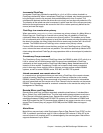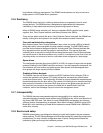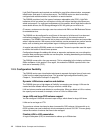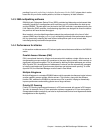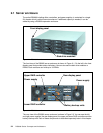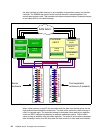Chapter 1. Introducing the IBM TotalStorage DS6000 series 19
pending
Sequential prefetching in Adaptive Replacement Cache (SARC) places data in cache
based not only on server access patterns, but also on frequency of data utilization.
1.4.3 IBM multipathing software
IBM Multi-path Subsystem Device Driver (SDD) provides load balancing and enhanced data
availability capability in configurations with more than one I/O path between the host server
and the DS6800. The data path from the host to the RAID controller is pre-determined by the
LUN. Below the RAID controller, load balancing algorithms are designed to direct the data to
the path that will have the best throughput.
Most vendors’ priced multipathing software selects the preferred path at the time of initial
request. IBM's free of charge
preferred path multipathing software offers performance beyond
this, by dynamically selecting the most efficient and optimum path to use at each data
interchange during read and write operations.
1.4.4 Performance for zSeries
In this section we discuss some z/OS relevant performance features available on the DS6000
series.
Parallel Access Volumes (PAV)
PAV is an optional feature for zSeries environments which enables a single zSeries server to
simultaneously process multiple I/O operations to the same logical volume, which can help to
significantly improve throughput. This is achieved by defining multiple addresses per volume.
With Dynamic PAV, the assignment of addresses to volumes can be automatically managed
to help the workload meet its performance objectives and reduce overall queuing. To utilize
dynamic PAV, the Workload Manager must be used in Goal Mode.
Multiple Allegiance
Multiple Allegiance is a standard DS6800 feature which expands simultaneous logical volume
access capability across multiple zSeries servers. This function, along with the software
function PAV, enables the DS6800 to process more I/Os in parallel, helping to dramatically
improve performance and enabling greater use of large volumes.
Priority I/O Queuing
Priority I/O Queuing improves performance in z/OS environments with several z/OS images.
You can, for example, favor I/O from production systems compared to I/O from test systems.
Storage administrator productivity can also be improved and Service Level Agreements better
managed due to this capability.



